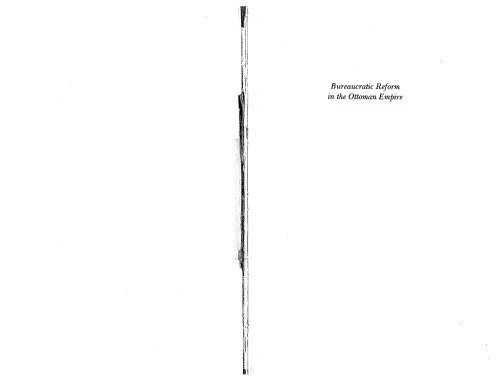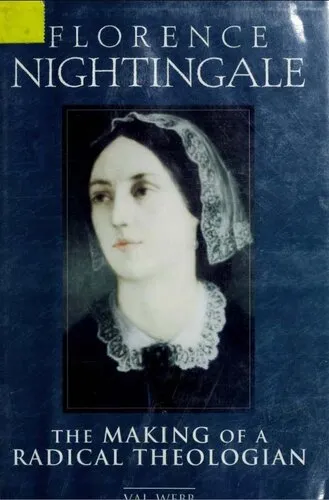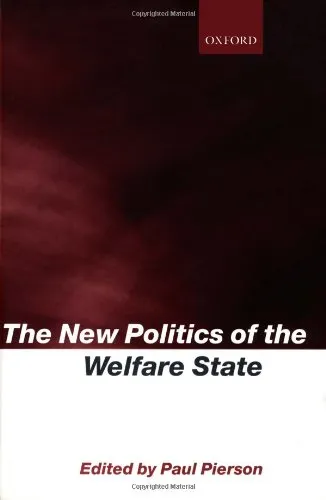Bureaucratic Reform in the Ottoman Empire: The Sublime Porte, 1789-1922 (Princeton Studies on the Near East)
4.5
بر اساس نظر کاربران

شما میتونید سوالاتتون در باره کتاب رو از هوش مصنوعیش بعد از ورود بپرسید
هر دانلود یا پرسش از هوش مصنوعی 2 امتیاز لازم دارد، برای بدست آوردن امتیاز رایگان، به صفحه ی راهنمای امتیازات سر بزنید و یک سری کار ارزشمند انجام بدینکتاب های مرتبط:
معرفی تفصیلی کتاب "Bureaucratic Reform in the Ottoman Empire: The Sublime Porte, 1789-1922"
کتاب "اصلاحات بوروکراتیک در امپراتوری عثمانی: Sublime Porte، 1789-1922" به قلم کارتر واون فایندلی، بررسی عمیقی از تحولات اداری در امپراتوری عثمانی ارائه میدهد و تمرکز آن بر روی نقش بحرانی است که Sublime Porte به عنوان مرکز اداری ایفا کرد.
خلاصهای از کتاب
کتاب حاضر به تحلیل و بررسی روند اصلاحات بوروکراتیک در امپراتوری عثمانی طی دورهای تقریباً یکصد ساله میپردازد. این اصلاحات شامل تغییرات ساختاری و تجدید نظر در سیستم اداری بودند که از اواخر قرن هجدهم آغاز شده و تا سقوط امپراتوری عثمانی ادامه داشت. کارتر واون فایندلی در این اثر به بررسی تحولاتی میپردازد که منجر به نوسازی دولت و نهادهای آن شدند و به تحلیل نیروهای اجتماعی و سیاسی موثر بر این اصلاحات میپردازد.
نکات کلیدی
- بررسی نقش حیاتی Sublime Porte به عنوان مرکزیت بروکراسی عثمانی.
- تجزیه و تحلیل فرآیندها و چالشهای تجدید ساختار بوروکراسی.
- تأکید بر تأثیر خارجیها و نیروهای بینالمللی در هدایت اصلاحات اداری.
نقلقولهای معروف از کتاب
«اصلاحات در امپراتوری عثمانی نه تنها ضرورتی داخلی بلکه پاسخی به فشار روزافزون نیروهای خارجی بود.»
«Sublime Porte نه تنها به عنوان محل جلسات دولتی بلکه به عنوان سمبل نوسازی اداری در جلوهگر بود.»
چرا این کتاب مهم است
این کتاب به عنوان یکی از آثار معتبر در زمینه تاریخ اداری و بوروکراتیک عثمانی به شمار میرود. اهمیت آن نه تنها به تحلیل دقیق و موشکافانه نویسنده از فرآیندهای اصلاحی بلکه به ارائه دیدگاهی جامع از جریانهای تاریخی و سیاسی موثر بر این تحولات برمیگردد. کتاب کارتر واون فایندلی با بررسی جزئیات و ارائه مستندات متعدد، به پژوهشگران و علاقمندان به تاریخ خاورمیانه و مطالعات عثمانی کمک شایانی میکند.
Introduction to "Bureaucratic Reform in the Ottoman Empire: The Sublime Porte, 1789-1922"
Welcome to the fascinating exploration of one of the most significant periods of transformation within the Ottoman Empire, spanning from 1789 to 1922. "Bureaucratic Reform in the Ottoman Empire: The Sublime Porte" charts the journey of the Ottoman bureaucracy as it navigates the demands of modernization and reform. This period marks a poignant chapter, exploring the intricate dynamics of administrative change against a backdrop of social, political, and cultural shifts.
Detailed Summary of the Book
The book provides a comprehensive examination of the bureaucratic reforms that transformed the Ottoman Empire from a traditional Islamic state into a modern government. It delves into the complexities of the Ottoman administrative apparatus, known as the Sublime Porte, during a critical period of vast changes driven by both internal and external pressures. The narrative follows the journey from the reign of Sultan Selim III through the end of the empire after World War I.
Author Carter Vaughn Findley meticulously traces the development of the Ottoman bureaucratic structure, emphasizing how reforms aimed to modernize the Empire to compete with Western powers and retain sovereignty. Through detailed analysis, Findley illustrates how these reforms introduced new administrative roles, redefined traditional power hierarchies, and led to the creation of modern governmental institutions.
The book discusses the successes and challenges of these reforms, highlighting the conflicts between progressive visions and conservative forces within the empire. The narrative showcases how bureaucratic elites played pivotal roles in pushing agendas and negotiating the complex interplay of resistance and acceptance of change.
Key Takeaways
- The Ottoman Empire's attempts at modernizing its bureaucracy were pivotal in its quest to maintain territorial integrity and political relevance in a rapidly changing world.
- Bureaucratic reforms were met with both enthusiasm and resistance, reflecting broader tensions within the society concerning tradition and modernity.
- The Sublime Porte emerged as a symbol of the empire’s administrative evolution, functioning as the epicenter of transformative governmental endeavors.
- The intricate relationship between European influences and local traditions was crucial in shaping the reformative trajectory of the empire's bureaucracy.
Famous Quotes from the Book
"In the annals of the Ottoman Empire, the age of bureaucratic reform stands as a testament to the transformative power of administrative innovation amidst a sea of relentless change."
"The Sublime Porte not only symbolized the heart of imperial administration but also emerged as the dynamic core from which modern statehood would burgeon."
Why This Book Matters
This book holds significant importance for historians, political scientists, and scholars interested in Middle Eastern studies. It lays bare the essential connection between government reforms and broader socio-political developments during the last epoch of the Ottoman Empire. By shedding light on how these reforms played a critical role in the empire's struggle to adapt to an evolving political landscape, the book provides crucial insights into the nature of political modernization.
Moreover, "Bureaucratic Reform in the Ottoman Empire" serves as a vital resource for understanding the continuity and change in governance theories. It highlights the challenges faced by an empire steeped in tradition as it attempted to implement modern administrative practices. This work enriches the discourse surrounding modernization theories, comparing Ottoman challenges and triumphs with those of other contemporary states undergoing similar processes.
دانلود رایگان مستقیم
شما میتونید سوالاتتون در باره کتاب رو از هوش مصنوعیش بعد از ورود بپرسید
دسترسی به کتابها از طریق پلتفرمهای قانونی و کتابخانههای عمومی نه تنها از حقوق نویسندگان و ناشران حمایت میکند، بلکه به پایداری فرهنگ کتابخوانی نیز کمک میرساند. پیش از دانلود، لحظهای به بررسی این گزینهها فکر کنید.
این کتاب رو در پلتفرم های دیگه ببینید
WorldCat به شما کمک میکنه تا کتاب ها رو در کتابخانه های سراسر دنیا پیدا کنید
امتیازها، نظرات تخصصی و صحبت ها درباره کتاب را در Goodreads ببینید
کتابهای کمیاب یا دست دوم را در AbeBooks پیدا کنید و بخرید
1325
بازدید4.5
امتیاز0
نظر98%
رضایتنظرات:
4.5
بر اساس 0 نظر کاربران
Questions & Answers
Ask questions about this book or help others by answering
No questions yet. Be the first to ask!














